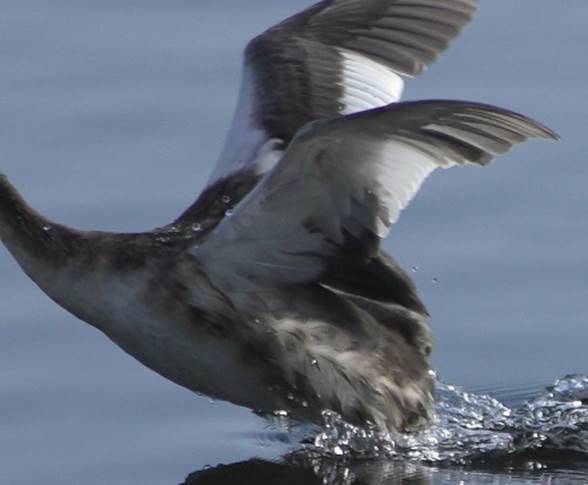I started investigating aging Great Crested Grebes (GCG) just after finding the bird at Yerrabi Pond. Geoffrey’s message suggesting an age for the bird has prompted me to try and make something out of the information I gathered. I continue
to be staggered at the paucity of basic information about our birds. The GCG is common through much of its world range and had been extensively hunted in Europe for its pelt so I was expecting that basic information such as aging would be well documented.
As with many other birds, there is still a lot of information lacking in the generally available references. If aging information is available in scientific articles, I have not been able to locate it in the sources I can access.
Because there is so little information available, I have looked at the data for all three subspecies. To summarise:
1.
The young are dependent on parents for 10-12 weeks in Australia and Europe (one European reference suggested 3-4 weeks).
2.
The juvenile markings on the face are lost by the first winter (3-5 months old) in all three subspecies. The moult before the first winter is prolonged, with growth of the tippet feathers during this imparting an orange-buff wash to
the ear-coverts and sometimes a dusky wash below these.
3.
In Spanish birds, the juveniles in the first winter are similar to adults in winter, except for scapulars with remnants of down on tips; grey secondaries and inner webs of outer greater coverts grey-Brown, sometimes with a white edge;
hind rim of tarsus only slightly serrated. Photo below of the Yerrabi bird in flight clearly shows white secondaries and indicates that the attributes described for Spanish birds may not be applicable in Australia.
4.
Dutch data indicates that moult of the head is almost continuous throughout the year, with high moult intensities in Autumn, peaking in the middle month. Neck moult is similar with adults peaking in the middle month and juveniles in
the last month of Autumn.
Looking at the Yerrabi bird, there is an orange wash on the ear coverts with a dusky wash below visible in some photographs. It still has some facial markings, which is as expected as it is not in its first winter yet. Based on the information
above, we should expect the facial markings to be gone by the end of Autumn. However, some photographs of the immature birds in winter still show some facial markings.
Details of the sources used available on request.
Steve


